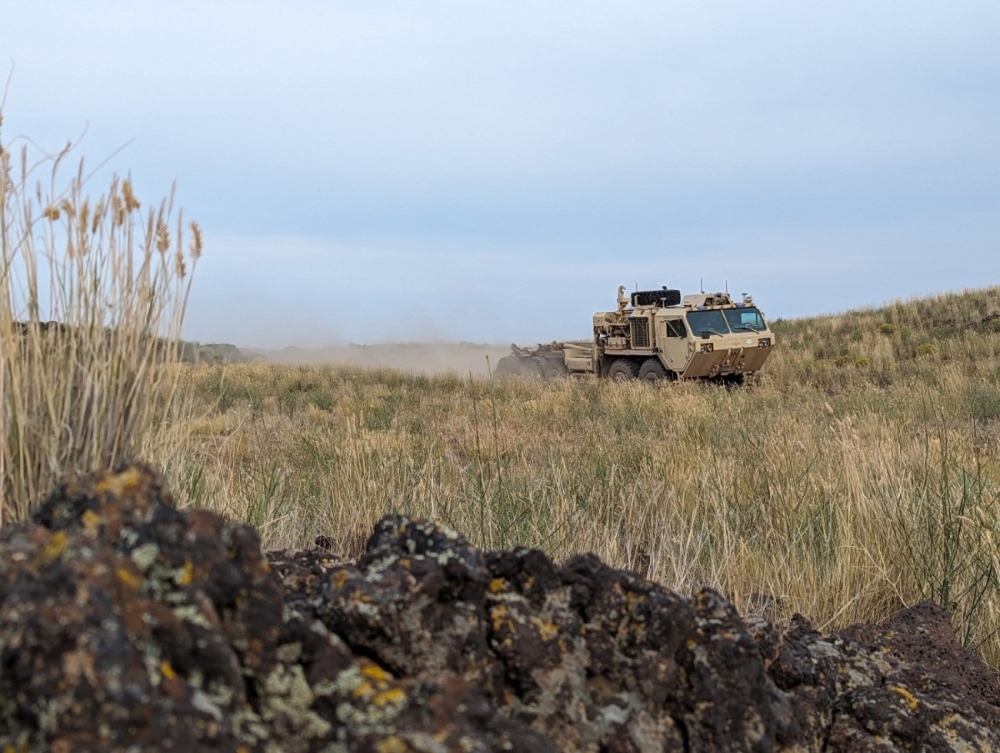
The US Army and the Defense Innovation Unit (DIU) have selected Carnegie Robotics and Forterra to progress prototyping work on the Autonomous Transport Vehicle System (ATV-S).
The US Army had originally awarded development and prototyping contracts to 3 different vendors in December 2023. The orders were awarded to Robotics Research Autonomous Industries (which has since become Forterra), Neya Systems, and Carnegie Robotics respectively, valued at $14.8 million to provide 4 prototypes each.
The new contract award has not yet been detailed in terms of value and provisions, but marks a first down selection and forwards the selected prototypes into formal Army Test and Evaluation. According to the December 2023 plans, this “Phase 2” award should include the construction of a further 2 prototypes.
Again according to the original plans, in Fiscal Year 2026 a single solution should be selected to progress into Phase 3, which would see the selected solution scaled up to equip a first Unit (First Unit of Issue, FUI) using all 6 prototypes from the previous 2 phases and 35 more vehicles for an initial total of 41.
However, the program is currently facing budget uncertainties. The change of Administration, and the new priorities that this has introduced, might have an impact on the project, which for sure faces funding difficulties due to the delays in getting a finalized FY 2025 budget through Congress.
The aim of the ATV-S program is to reduce the manpower requirement associated with resupply and logistic operations by achieving a combination of humans and machines that increases the agility of combat formations and, potentially, frees manpower to be redirected to other missions and roles.
According to the US Army, the ATV-S sets will have to support convoy operations, waypoint navigation, and teleoperations in order to reduce soldier exposure to hostile threats while increasing logistics throughput.
The Army wants suppliers that can take existing military vehicles – including subsystems, such as trailers – and enhance them for safe, reliable, robust uncrewed operations through hardware and software integration.
Autonomous systems for resupply, maintenance and energy distribution could be game-changing in terms of additional capability for a reduced required headcount. The autonomous trucks are expected to increase the output of a Divisional Composite Truck Company by 50%.
An earlier attempt known as Expedient Leader Follower (ExLF) had seen a number of Oshkosh Palletized Load System heavy trucks fitted with autonomy software cores, but by 2023 the program closed down without fielding operational capability. ATV-S was initiated to find commercial solutions directly from the market. The aim is to produce heavy expanded mobility tactical trucks (HEMTTs) fitted with the necessary digital infrastructure aboard that allows integration of the autonomy suites once selected.
The progress of the program depends on testing later in the course of this year which however might not be possible if the FY 2025 budget is not finally passed by Congress. In the interim, the Department of Defense is operating under a continuing resolution that maintains FY24 spending levels.
US Army soldiers are scheduled to get their hands on some prototype forms of the ATV-S at the incoming Project Convergence Capstone 5 (PC-C5) event, a joint and multination, 2-phase, “in-the-dirt” experiment testing new technology and concepts. PC-C5 will take place at the National Training Center, Fort Irwin, California, during March.








